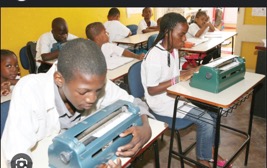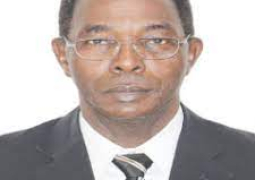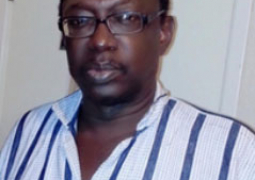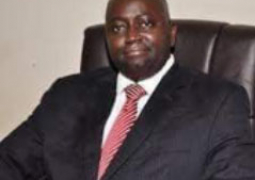
However, for school going children with disabilities, the path to education can be a journey fraught with hurdles and obstacles that extend far beyond the realm of academia. These young scholars, eager to learn and grow, confront a range of challenges that not only shape their educational experiences but also reflect the broader state of inclusivity within our societies. This introduction delves into the multifaceted challenges that school going children with disabilities encounter within the educational system, highlighting the need for a more inclusive and accommodating approach.
However, addressing the factors leading to the challenges school going school going children with disabilities face requires a concerted effort from the government, educational institutions, communities, and international organizations to ensure that students with disabilities have equal access to quality education and the support they need to succeed.
According to the report of the National Disability Study commissioned by UNICEF in collaboration with the Ministry of Basic and Secondary Education (MoBSE) in The Gambia, the study was intended to update the information available on children with disabilities in the light of prevailing sociocultural, legislative and national development contexts.
The Government of The Gambia carried out a national disability survey in 1998, which revealed that the overall disability prevalence rate was 1.6 per cent, with the child disability rate at 9.9 per 1000 and the prevalence rate for boys and girls was 11.2 and 8.5 per cent respectively. The study also provided information on the types of disability among children in mainstream schools, the challenges they faced and their coping strategies. The study revealed that out of the sample of school going children with disabilities in the mainstream classrooms 25.7 per cent were partially sighted; 12.3 per cent had significant speech difficulties; 8.9percent had mobility challenges, 5.4 per cent were hard of hearing and 3.7 per cent had significant manipulation and fits problems. Some of the major constraints affecting the mainstreaming of school going children with disabilities in schools were inadequate technical aids, few disability friendly games, and limited financial resources and scholarships. Other important findings were inaccessible physical facilities, few qualified teachers and inadequate learning and instructional materials.
The education of children with disability is a priority for the MoBSE and a two-pronged approach has been adopted accordingly. School going children with disabilities are educated in three special needs schools that are GOVI School for the Deaf, St John’s School for the Blind and Methodist School for Learning Difficulties. Children with mild disabilities are mainstreamed into regular schools. Itinerant teachers were trained and they in turn provide support to the teachers in managing cases of mild disabilities.
The main objectives of the study were to update the information on the situation of children with Many differently able children were interviewed and their complains were the social Stigma and discrimination they that they often face which sometimes affects their self-esteem and participation in the classroom’ they also call on government to provide disability awareness programs for students, teachers, and staff to increase understanding and empathy and to also encourage open discussions about disability and its impact on individuals and society.
Mamie Mendy, a teacher at St John School for the Deaf/ dumb, lamented on the hardship faced by disable children in school.
Ms Mendy explained that children with speech or hearing impairments might find it more challenging to communicate with peers. making interactions with their peers more difficult.
However, school going children with disabilities experience social isolation at greater rates than those without disabilities. Social isolation can arise from a combination of physical barriers, communication difficulties, and social attitudes.
She added that the efforts in schools can help mitigate social isolation. "When teaching children with physical disabilities or intellectual disabilities, schools should include them in mainstream classes as much as possible. They should also foster a school culture that encourages diversity and inclusion, educate children and staff about working with school going children with disabilities, and also provide appropriate support services for children."
Mariama Darboe, a student at St John School for the Deaf/ Dumb, also noted that she feels fine of being a deaf child like any other person. She said she has six brothers who are deaf; thus communicating with them is very effective.
She expressed that the social discrimination she faced in the society can be stressful at times. “People will disregard you in the society due to your condition People tends to make friends with people with ability than those with disability as a result you socialize yourself from the society, which could affects your mental status,” she lamented.
"We faced huge difficulties from the society especially during special occasions in the society people will not inform us about it due to the disregards they have for people with disability. Sometimes you just wake up and see or hear an event happening without having any knowledge or being inform about it.”
Mariama Baldeh of GADHOH women’s wing, who doubles as a student at the Gambia College, said disability students, especially for the deaf, are challenged with communication barrier because of lack of sign language interpreters in schools.
She said that during her school days she would struggle to understand what was being taught and she appealed to the administration of the schools she attended for sign language interpreter but her efforts proved futile.
Baldeh further explained that during her programs at Gambia College, she personally paid sign language interpreters help her understand the lectures.
“We want the government of the Gambia to support deaf education, it is not fair for a deaf person to keep looking for support, and we want to be educated like any other citizen. The education policy says education for all but that is not been fully implemented,” she noted.
Lamin Ceesay, the first vice president of the Gambia Federation for the Disabled, said the Government has not provided education resources for students with disabilities.
Most of the deaf teachers have never undertaken courses, especially on sign language, he added.
“Students that are visually impaired lack Braille machine or print paper at the School. The albino students from poor background cannot afford to buy sun cream lotion on daily basis, which frustrates them to walk under sun to get proper education,” he bemoaned.
He posited that education helps people to participate in their society and access opportunities but today 99% of deaf school going children have been trapped below general certificate level of the education system, adding that they could obtain neither higher education nor decent employment.
“In fact it is hard to find a single deaf student among thousands of students attending local universities, which is a clear proof that deaf education has never been given the attention it deserves,” he stated, calling on the authorities to give them a helping hand to especially learn and contribute to national development.





